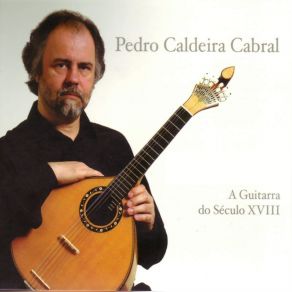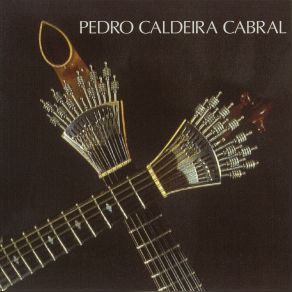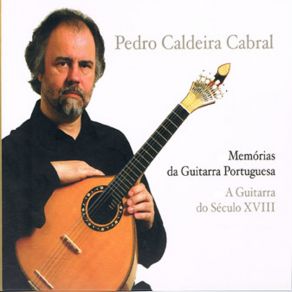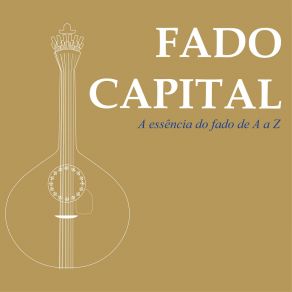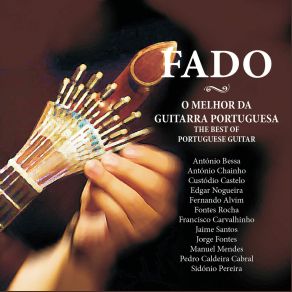Pedro Caldeira Cabral
Wikimp3 information about the music of Pedro Caldeira Cabral. On our website we have 7 albums and 4 collections of artist Pedro Caldeira Cabral. You can find useful information and download songs of this artist.
Biography
[Edit]He plays beautiful music on a beautiful instrument, and if that doesn't make a person happy, then what could? He certainly looks pretty happy on the back cover of his CD Varioces, holding his petite Portugese guitar and beaming benevolently. He has become one of the world's masters of an instrument that developed as a hybrid centuries ago, and has composed a body of work for the Portugese guitar that has been collected on a series of wonderful recordings. Because of the historical development of the genre of music he eventually became immersed in, he represents an interesting blend of both classical and traditional approaches to both learning and making music. At first listen, one would think his music would belong directly to the classical tradition, as it sounds something like classical guitar music and within it has references to Italian, Flemish, and English classical music. However, the actual development of music for the Portugese guitar is considered a particular type of urban folk music and as a result there is no standard, established classical tradition of learning the instrument as there is with the standard or Spanish guitar.
So, Pedro Caldeira Cabral is the rare musician who is both self-taught and classically trained. He began with the latter and so-called legitimate study of guitar, recorder, flute, and viola from the age of ten. His home was a hotbed of classical record spinning, the most common sounds playing being the German romantics and Baroque pieces. This is what he listened to and practiced until he was 15. Then a bug got in his ear, something like one might pick up in the older parts of town. It was the Portugese guitar, a combination of the Renaissance zither, which was introduced to Portugal in the 16th century, and the guitar as we know it today, which came along roughly 200 years later. In the attempt to combine the sweet, high, ringing sound of the zither with the flexibility of the guitar, the Portugese craftsmen came up with what is arguably a much better version of what was created in the 12-string guitar. The Portugese model also has a dozen strings, tuned in octaves, but because of its design and smaller size, doesn't have the problem of more than 10,000 extra pounds of pressure on the neck. He began composing for the instrument when he had learned enough to be able to perform his works. Several periods exist within his compositional development, the first being straightforward copying of the types of pieces other Portugese guitarists were playing in the saloons. This time around he was learning a kind of music where he had no choice but to go and listen to the players and copy what they were doing by ear and eye. There was no school of Portugese guitar or acknowledged maestro offering an instruction course. By 20, his experience with the traditional music was deep enough that he could serve as the conductor of several ensembles that specialized in early music, Lucitani Musici and La Batalla. In the next stage of more intricately conceived pieces, he began adding the influences of the classical music he had studied when he was young. For most of his pieces, he is accompanied by a nylon string classical guitarist, bringing out the hearty sound of this instrument's bass strings. He performs with guitarist Francisco Perez on the previously mentioned World Network recording. His debut recording was the 1971 Guitarres de Portugal, and the 1982 Encontros is a favorite of many guitar listeners. Recordings from the late '80s and the 1994 Momentos de Guitara Portugese glow with his more developed compositional approach. He continues to maintain a fascinating open mindedness and as a result, creates a music that seems limitless in its possibilities. As a result, he is highly in demand in several fields related to his speciality. He has performed solo all over the world, including concerts in Europe, the United States, China, and Brazil. There have been commissions to create pieces for film and theater, and he has also created opportunities for himself as a lecturer and teacher in various aspects of traditional Portugese music. This country's fado styles combine the Portugese guitar with mournful laments, and enough vocalists in this style to cause a small traffic jam have called on Cabral to be in their accompanying group. He went on to learn many other instruments that are used in Portugese music, including the cavaquinho, viola braguesa, and viola alentejana. The viola is also a regular feature of fado music, often played in tandem by a pair of violists. He can't seem to get enough of musical instruments and has also gotten involved as an instrument builder and restorer.
Title: Pedro Caldeira Cabral: Variacoes - Guitarra Portuguesa
Artist: Pedro Caldeira Cabral
Genre: World Music
Collections
Title: Fado - Special Edition World Heritage Vol.1
Genre: World Music
Title: Guitarra Diversa
Genre: Latin
Title: 100 Best Of Fado - Um Tesouro Português (CD5)
Genre: Fado
Featuring albums
Title: Fado - O Melhor da Guitarra Portuguesa
Artist: Vários Artistas / Varios Artistas
Genre: World Music
Title: Fado - The Best of Portuguese Guitar
Artist: Vários Artistas / Varios Artistas
Genre: World Music



